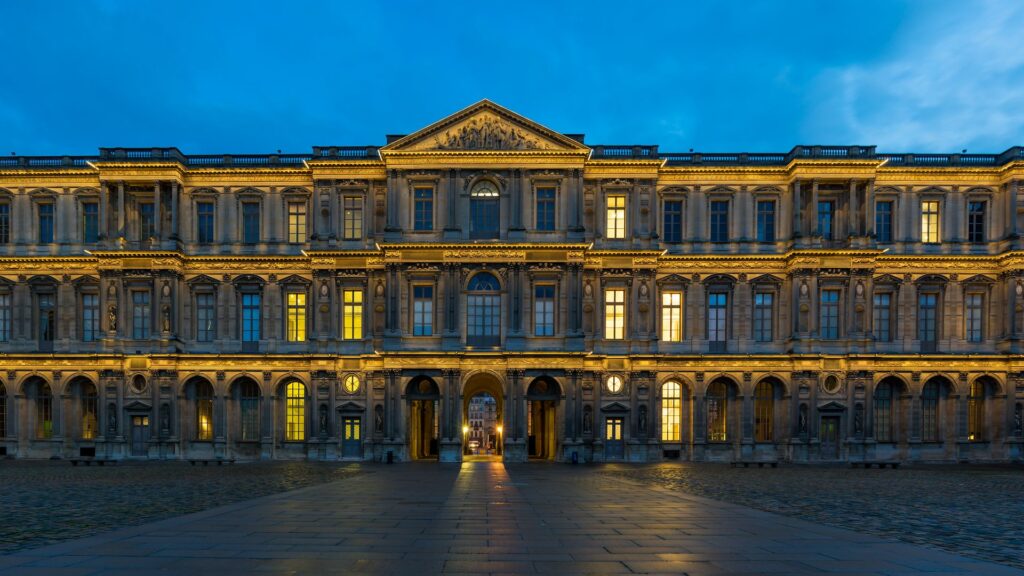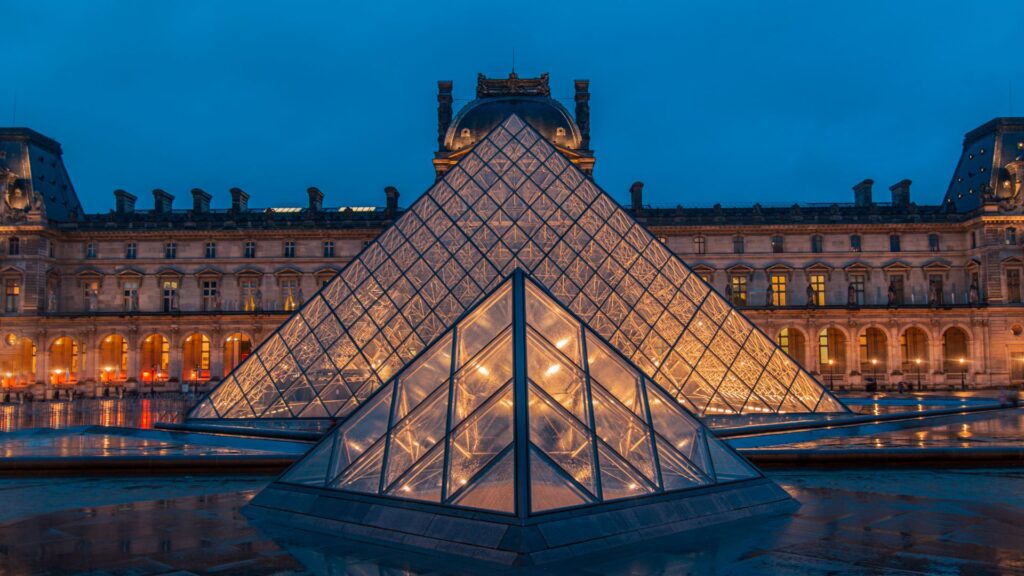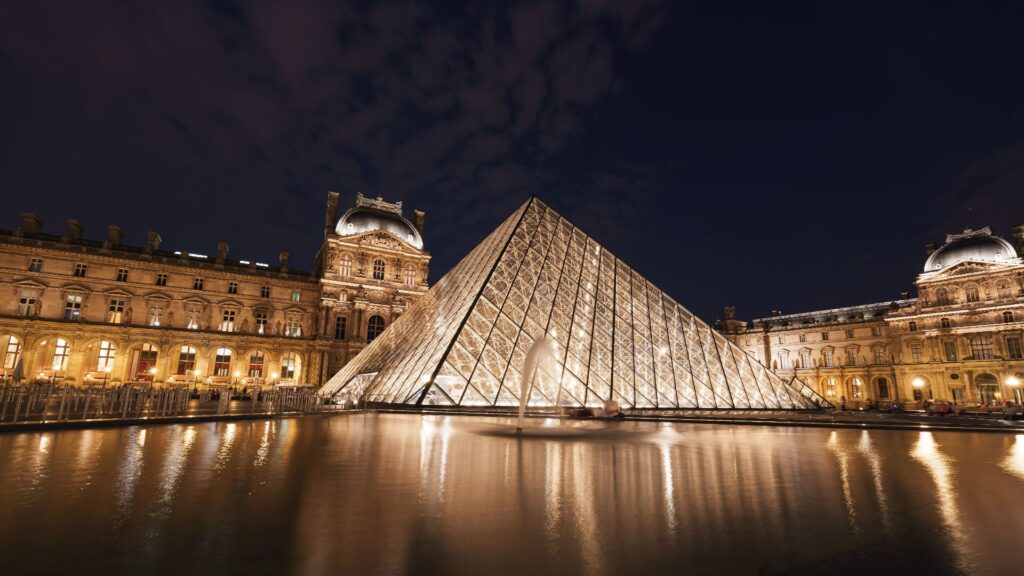In the heart of Paris, the Louvre stands not just as a museum, but as a grand repository of human creativity and history. With its iconic glass pyramid melding seamlessly into the historic Palais du Louvre, this world-renowned institution invites visitors to embark on an unparalleled journey through art and time. The Louvre is more than a destination; it’s an experience that captivates the imagination and enriches the soul.
As you step into this magnificent structure, you are stepping into a world where each corridor, gallery, and exhibit tells a story of civilizations, cultures, and artists that have shaped our world. From the enigmatic Mona Lisa to the majestic Winged Victory of Samothrace, the Louvre houses an array of masterpieces that transcend time and geographical boundaries. This introduction serves as your gateway into this realm of artistic grandeur, where each work of art is a chapter in the vast narrative of human history and creativity. Prepare to be enthralled by the beauty, to be lost in the labyrinth of art, and to find yourself in the echoes of the past that resonate within the walls of the Louvre.
The Louvre: A Portal to World Art and History
The Louvre is not just a museum; it’s a journey through the corridors of global history and art. Located in the heart of Paris, the Louvre’s imposing structure and its famous glass pyramid entrance are as iconic as the treasures it houses. Originally a royal palace, the Louvre was transformed into a public museum during the French Revolution. Today, it stands as a testament to human creativity, showcasing over 35,000 works of art spanning thousands of years. A visit to the Louvre is essential for anyone seeking to experience the essence of Paris and the breadth of human artistic achievement.

Masterpieces of the Louvre: From Ancient to Modern
The Louvre’s collections are unparalleled, featuring works from ancient civilizations to 21st-century art. Its most famous resident, Leonardo da Vinci’s Mona Lisa, continues to captivate visitors with her enigmatic smile. The museum also houses other masterpieces like the Venus de Milo, the Winged Victory of Samothrace, and works by masters such as Caravaggio, Delacroix, and Rembrandt. Each gallery and exhibit within the Louvre tells a unique story, providing a comprehensive look into various art movements, historical periods, and cultural contexts.

Architectural Marvel: The Louvre and Its Iconic Pyramid
The Louvre’s architecture is a work of art in itself. The modern glass pyramid, designed by I.M. Pei, juxtaposes the classical French architecture of the original palace, creating a stunning visual blend of old and new. This fusion reflects the museum’s ethos: respecting history while embracing modernity. The pyramid serves as the main entrance and is particularly mesmerizing at night when it lights up, adding to the magical ambiance of the Parisian night.
Experiencing the Louvre: Tips for Visitors
Visiting the Louvre can be overwhelming due to its sheer size and the volume of artworks. Planning ahead is crucial. Consider focusing on specific sections or artworks of interest to make the most of your visit. The Louvre offers guided tours, audio guides, and visitor trails to help navigate its extensive collections. Also, don’t miss the lesser-known gems of the museum, such as the Napoleon III Apartments, which offer a glimpse into the opulent lifestyle of French royalty.

The Louvre – A Cultural Beacon in the Heart of Paris
The Louvre is more than a museum; it’s a cultural beacon that illuminates the artistic and historical achievements of humanity. Its collections bridge time and geography, offering visitors a window into the world’s artistic heritage. The Louvre not only houses some of the most famous artworks in history but also stands as an architectural marvel, symbolizing the fusion of historical grandeur and contemporary innovation.
A visit to the Louvre is a transformative experience, a journey that takes you through the annals of human creativity and thought. It’s a place where art and history enthusiasts, casual visitors, and scholars alike can find inspiration and insight. The Louvre, in its majestic presence in the heart of Paris, continues to enchant and educate, solidifying its place as a must-visit destination for anyone seeking to explore the depths of art and history.
How much time should I allocate for a visit to the Louvre?
To fully appreciate the Louvre, plan to spend at least half a day, though a full day is ideal to explore a more significant portion of the museum.
Are there any days when the Louvre offers free entry?
The Louvre offers free entry on the first Saturday evening of each month and on Bastille Day (July 14). It’s advisable to check the official website for any updates on free entry days.
Is photography allowed inside the Louvre?
Photography is allowed in most areas of the Louvre for personal, non-commercial use, but flash photography is prohibited. Some special exhibits may have different rules, so it’s best to check signage or ask staff.
What is the best time to visit the Louvre to avoid large crowds?
To avoid large crowds, it’s best to visit the Louvre on weekday mornings or on Wednesday and Friday evenings when the museum is open late. Avoid weekends and public holidays, which tend to be the busiest times.
Can I buy tickets to the Louvre on-site or should I purchase them in advance?
While you can purchase tickets on-site, it is highly recommended to buy them in advance online. This not only saves time but also guarantees entry, as the Louvre can be quite busy, and there may be long queues for on-site ticket purchases.
